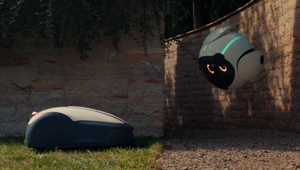
6 Ways to Turn Around a Fading Brand

Grocery brands face many challenges in these fast-moving digital times; they need to think fast to combat the pincer movement of competitors and changing consumer behaviour. Reviving a brand is an option for those found to be in decline. It’s vital to recognise, however, that many comebacks fail simply because the expectation is that marketing alone can be the saviour.
The best turnarounds are the result of more fundamental changes. With this in mind, here are a number of steps FMCG brands can take to rise again:
Go back to the future
What do Nike, Apple and Red Bull all have in common? They share a clear proposition that is consistently and coherently communicated over time. Know what made your brand successful in the first place; these are a brand’s foundation. Divulge information from staff and loyal customers to keep your brand fresh. British Airways did exactly this with its return of the ‘To Fly. To Serve’ brand-led marketing campaign – its strategy has renewed the nation’s bond with the flag carrier.
Rise to the challenge
Skoda, Domino’s Pizza and Dove have all staged spectacular comebacks by diagnosing the brand’s problem and tackling their critics head on. By becoming aware of the fact it was the butt of many jokes, Skoda developed a feisty campaign that directly challenged people’s misconceptions by adopting an “it’s better than you think” strategy. The line ‘It’s a Skoda. Honest’ was a turning point, together with a radically improved manufacturing strategy.
Dove, meanwhile, chose to subvert the often ridiculously unattainable aspirations of toiletries advertising and the rest is history. And perhaps one of the bravest examples we’ve seen is from Domino’s. It built on its ‘cardboard pizza’ reputation to deliver the ‘Pizza Turnaround - oh yes we did’ campaign.
Treat consumers like human beings
Look beyond your product’s functional abilities and play on a deeper emotional need – look to Coca-Cola for cues here. Millward Brown once highlighted that being ‘meaningfully different’ enables brands to justify higher prices, which will eventually allow faster growth.
The ticket is to feel more and think less. Hovering over the ‘buy’ button or standing in front of the fixture, deep in the moment of purchase, consumers rapidly recall brands with the strongest memory structures, and emotions triumph.
Thinkbox’s emotive ads have delivered results to rival rational campaigns over several years. Furthermore, emotional stimulation encourages engagement. Unruly is a living example of how establishing that connection can drive video shares.
Never stand still
In order to remain truly competitive, brands must constantly evolve to remain relevant to their customers. To make peace with even the most fickle of markets – 16- to 34-year-olds – strategists should consider collaborations and the use of popular culture phenomena. Cue ‘Wall’s Wall'sie. Onesies you can wear down the shopsies.’
Know your brand inside and out
Become better acquainted with your brand, its strengths and weaknesses. Drawing on real-life snippets from customers, the wider public and your own staff, you can keep on top of your brand. Use your instinct, set a hypothesis and prove it.
Core strengths include: better product, different promise, experience (see Airbnb) or price. Defining this will help shape your marketing strategy. ITV developed a year-long programme of research to understand its core strength. The broadcaster put audience insight front and centre in developing its new brand strategy and communications. The resulting ‘The Heart of Popular Culture’ positioning came about through an understanding of the brand’s true promise: ITV tells stories we all care about that we want to share and talk about.
Investment
Staging a comeback and turning around a brand’s performance requires investment. But results won’t come flooding in overnight, having a little unflappable determination will give you a healthy advantage to keeping the beating heart of a brand going.
Finally, and perhaps most crucially, every brand turnaround needs a leader. Someone needs to stand up and be counted, believing in the essence of the brand and guiding it to a brighter future. Who’ll be the brand hero in your organisation?
Niki Macartney is Strategy Director at Southpaw













